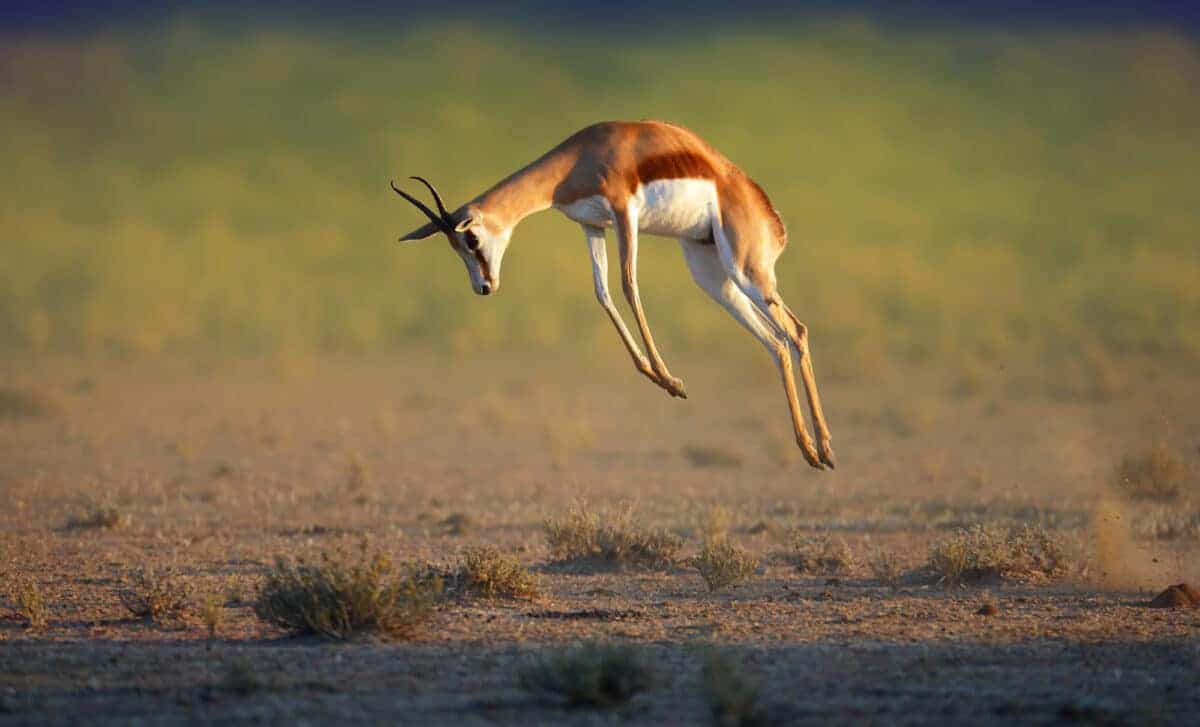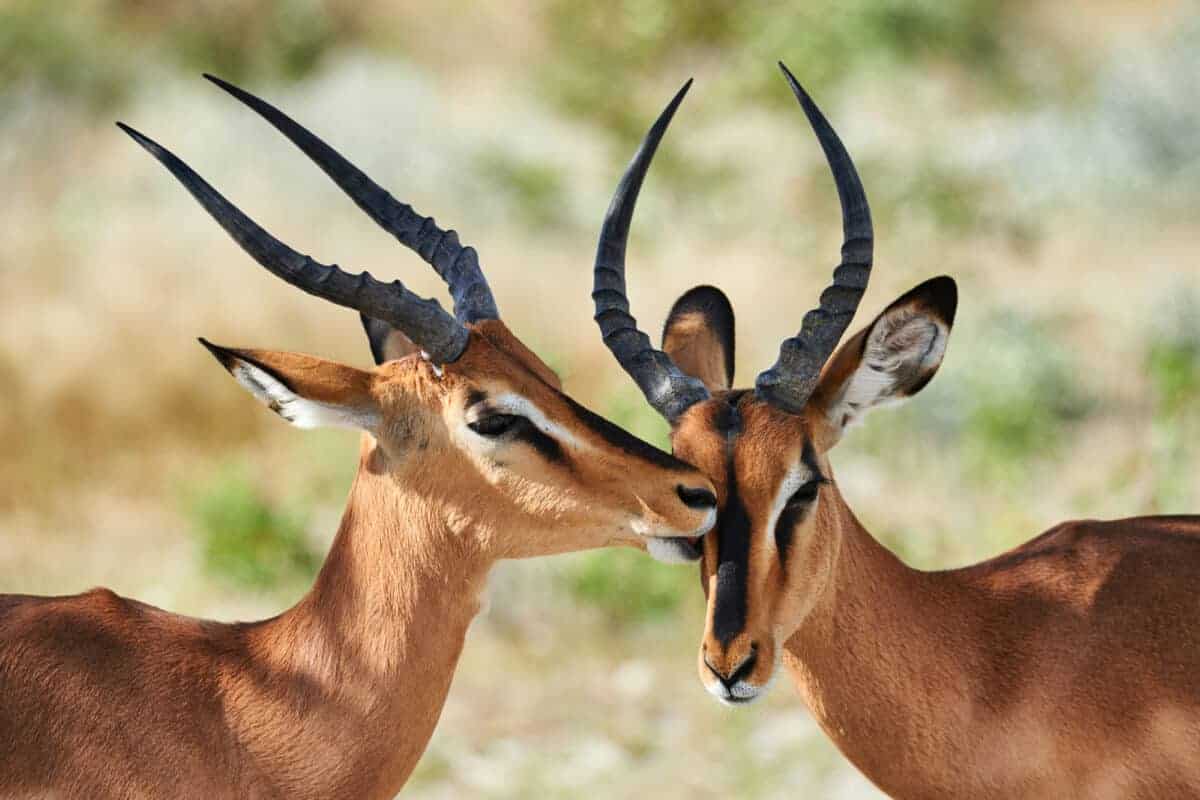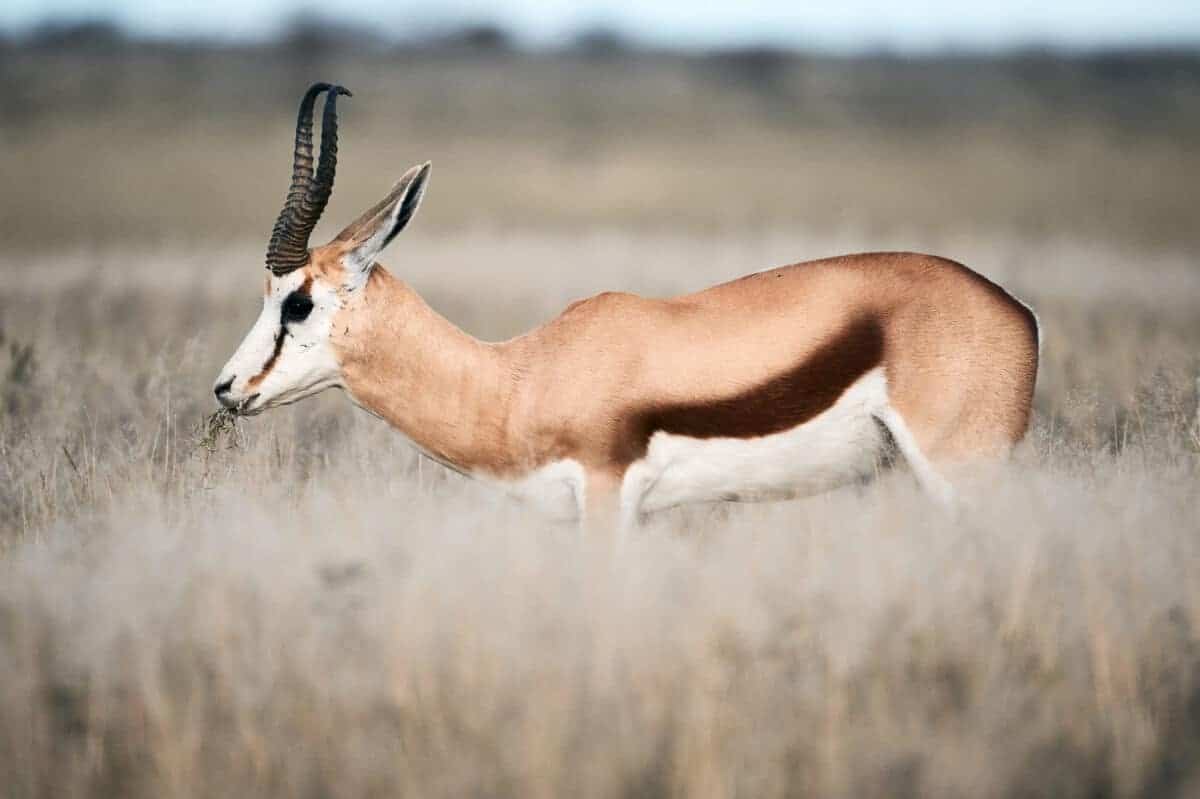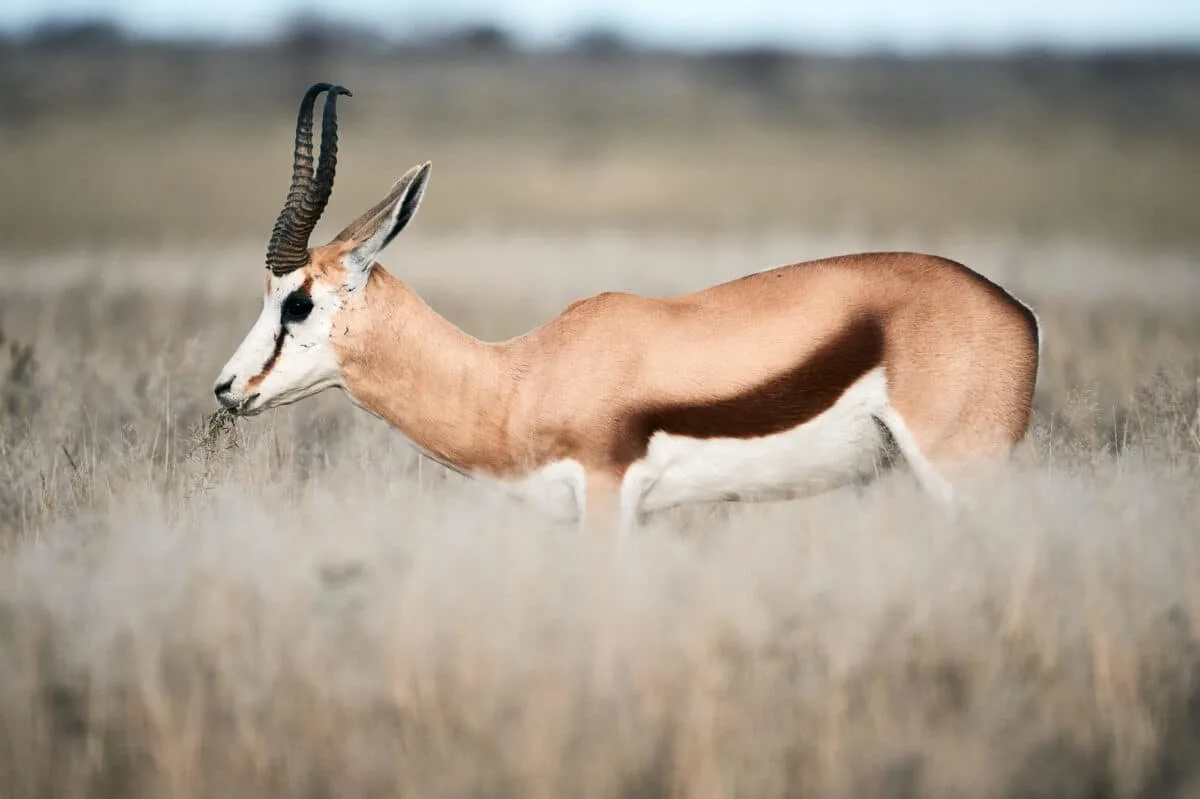Antelope are one of the most fascinating creatures on the planet. These beautiful creatures travel several continents’ plains, deserts, and forests for food and safety.
It’s no wonder why people are fascinated by these magnificent creatures – from their unique adaptations to their evolutionary history; antelope offers a treasure trove of information for nature and animal enthusiasts alike.
In this article, we’ll dive deep into the world of antelope, exploring everything from their natural habitats and diets to their mating rituals and behavioral patterns.
Join us as we explore the mysteries of these awe-inspiring creatures and discover what makes them so special.
You might also like to read about the Wildebeest Migration.
Habitat and Distribution

A diversified group of animals known as antelope may survive in many different habitats. Some species, like the saiga antelope, can be found in harsh, arid steppes, while others, like the springbok, graze on the lush plains of Africa. Still, others, like the addax, have adapted to survive in the harsh desert climates of North Africa.
Antelope typically favor open grasslands and semi-arid savannas where they are free to roam and graze on the nutrient-rich vegetation. Their main food sources are leaves, bark, and grasses.
Characteristics of Antelopes
Antelope horns are one of their most distinctive features, and they come in various shapes and sizes. Both male and female antelope have horns. However, males often have larger and more complex horns than females.
The antelope’s horns comprise keratin, the same substance that makes up our fingernails, and they keep growing to adulthood. Depending on the species, horns can curve backward, spiral, or even form a straight line.
These magnificent structures serve numerous reasons, like defense against predators, dominance displays during mating season, and heat regulation. In some animals, females maintain dominance within a herd using their horns.
Speed and Agility
Antelope are recognized for their speed and agility, crucial adaptations for survival in the wild. They are among the world’s fastest land animals since they can run up to 60 mph. Antelope can outrun predators like cheetahs and lions thanks to their long, slender legs, which allow them to take long strides and turn quickly.
Additionally, their lightweight and slim body shape reduces air resistance, which enhances their maneuverability. Antelope have great hearing and vision as well, which aids them in spotting danger and navigating their surroundings with ease.
Difference Between Male and Female Antelopes
Male and female antelope exhibit some notable variances in physical characteristics, depending on the species. Generally, males are larger and heavier than females and have more striking horns. Male horns are not only bigger but also more textured and have a more elaborate shape than female horns.
Males are also typically more territorial and aggressive than females, especially during mating season. In contrast, females in some species have a more streamlined body shape than males, which makes them more agile and quick.
Nutrition and Behaviour
An antelope only eats plants because it is a herbivore. Their diets consist mainly of grasses and leaves, depending on their species and environment. Some species of antelope have adapted to eat more woody and fibrous vegetation, which allows them to thrive in harsh areas with less grazing available.
They use their sharp teeth to graze on the grasses and leaves available in their surroundings, which is a basic way of getting food. To avoid having to rely on water sources for food, antelope have developed to be able to go for extended periods without drinking.
Antelopes’ preferred diets are influenced by their environment and the season. For instance, they mostly consume grass in grasslands while grazing on shrubs, bushes, and trees in savannahs. Antelopes frequently eat less nutritious food to live during the dry season.
To suit their dietary needs, antelopes distinctively metabolize food. They can digest and ferment difficult plant material because of their four-chambered stomach. The cellulose in the plant cell walls is broken down during fermentation, making extracting nutrients simpler. Antelopes don’t need to drink as much water because they get water from the vegetation they eat.
The Social Behaviour of Antelopes
Although the antelope’s social behavior varies depending on the species, most antelope live in herds. The number of animals in a herd might range from a few to several hundred.
These herds have a hierarchical structure that has developed via dominance. Pushing or antler locking are two common physical shows of strength used to establish this authority. During mating season, males engage in displays of virility to attract females, including vocalizations, scent marking, and battling off rivals. Once a male successfully attracts a female, they will form a pair bond and mate for one mating season.
Each breeding season, the female will typically give birth to one or two calves, and the young antelope will remain with their mother until they are old enough to survive on their own.
Mating and Reproduction Rituals

Depending on the species, the gestation period for antelopes usually lasts between six and nine months. Although twins can occasionally be born, the female antelope normally gives birth to a single young. Male antelopes release a distinct scent during the breeding season to entice females.
The female antelope will leave the main herd after copulation to give birth alone. This is done to keep other antelopes from interfering and to help safeguard the baby from predators.
Courtship Customs
Antelopes engage in several courtship rituals to entice a partner. Male antelopes of some species will congregate and perform dominance rituals to assert their status as the strongest and most seductive partners.
To demonstrate their might, they will horn-clash and adopt an aggressive stance. The oribi of South Africa, which will leap up to five feet in the air to demonstrate their agility, engages in more subdued courtship rituals than other species. The male will also release a pheromone during courtship to draw the female even more.
Read about our old ice age friends:
Parental Practices
In general, antelopes are very protective of their offspring. The mother antelope will clean the calf and assist it in standing after giving birth. In addition, the mother will protect her young by giving it continuous grooming and hiding it while she goes off to graze.
Females of some species, like the impala, will gather their young in a “nursery group” while they go out foraging. Normally, male antelopes do not participate in parenting, though occasionally, they may shield the mother and young from harm.
Threats to Antelope’s Survival

Sadly, there are numerous risks to antelope populations all around the world.
Their grazing lands are being rapidly taken up and developed for human use, which is a significant habitat loss.
This has been especially destructive in Africa, where expanding agriculture, urbanization, and mining have forced antelope out of their native savannas and forests.
Another significant problem is hunting, as antelope are frequently hunted for their meat, hides, and prize horns. The habitats and rainfall patterns that antelope have relied on for survival for millennia are beginning to change due to climate change.
Conservation Attempts
Thankfully, governments, environmental organizations, and local communities have worked together to safeguard antelope species. These initiatives include everything from creating animal reserves and sanctuaries to awareness-raising campaigns on the value of conservation.
In addition, strict laws prohibiting hunting and poaching have been implemented in many nations, with punishments ranging from hefty fines to jail time. Lastly, environmentalists are examining strategies to lessen the effects of climate change on the antelope’s food and water sources.
Key Points
| Topic | Summary |
|---|---|
| Habitat and Distribution | Antelopes are found in various habitats, from arid steppes to lush plains and harsh deserts. They graze on grasses and leaves. |
| Characteristics | Antelopes have distinctive horns made of keratin, with males often having larger and more complex horns than females. |
| Speed and Agility | Antelopes are known for their speed and agility, reaching up to 60 mph, thanks to their long legs, lightweight bodies, and keen senses. |
| Difference Between Genders | Male antelopes are larger, heavier, and have more striking horns, while females are more streamlined and agile. |
| Nutrition and Behavior | Antelopes are herbivores, primarily feeding on grasses and leaves. They have adapted to survive with less water and digest difficult plants. |
| Social Behavior | Most antelopes live in herds with hierarchical structures. Males engage in dominance displays during mating season. |
| Mating and Reproduction | Male antelopes are larger, heavier, and have striking horns, while females are more streamlined and agile. |
| Threats and Conservation | Antelopes face habitat loss, hunting, and climate change. Conservation efforts include reserves, anti-poaching laws, and awareness campaigns. |
The Bottom Line
The antelope is a fascinating animal that has captivated people’s curiosity and imagination worldwide. They are among the most striking species in the animal kingdom due to their beauty, elegance, and speed.
We become increasingly aware of the complexity and interconnectedness of life on Earth as we continue to learn more about these amazing creatures!
Enjoyed this article? Read more amazing ones: Australian Labradoodles – Unleashing Love And Fluffiness!, Angora Ferrets – The Ultimate Guide to Care, Health, and Fun, and Angora Goat – A great farm edition.
Join our Forum for free today!

- Top 10 Savanna Animals - June 3, 2024
- American Bulldog – Cute Ball of Fear - May 31, 2024
- Mammoths Vs. Mastodons - May 31, 2024




